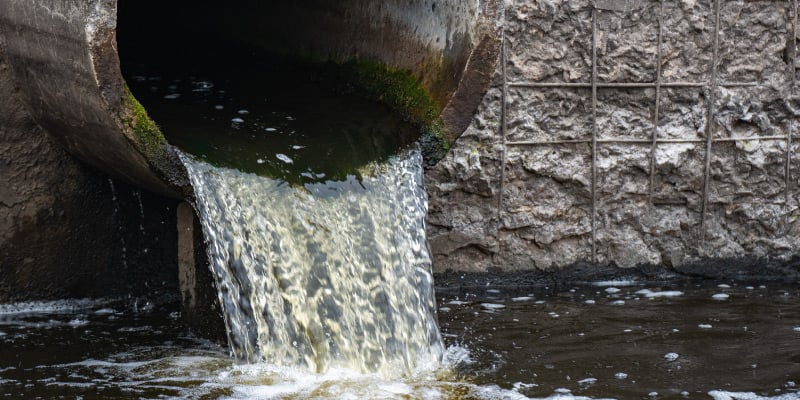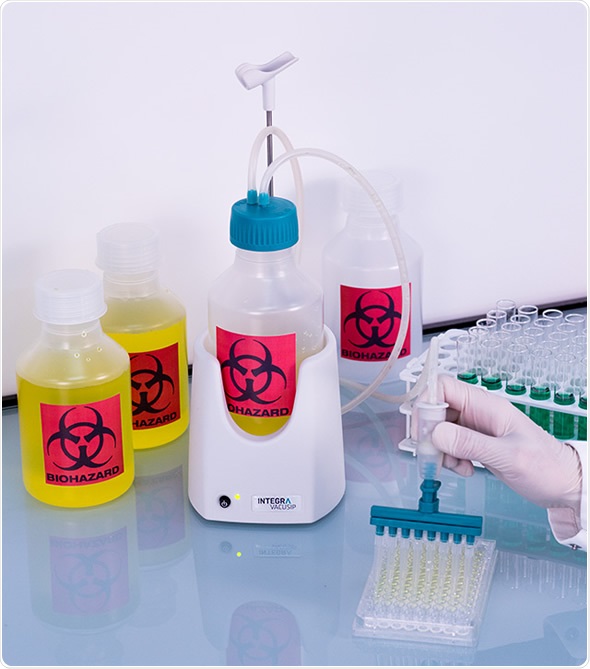Innovative Industrial Wastewater Treatment Solutions: Protecting the Environment
Innovative Industrial Wastewater Treatment Solutions: Protecting the Environment
Blog Article
Comprehending the Comprehensive Process of Fluid Waste Disposal: Ideal Practices and Environmental Effect Factors To Consider
The monitoring of liquid waste disposal is a multifaceted concern that calls for an extensive understanding of numerous best techniques and their connected environmental influences. From the sorts of fluid waste created to the approaches employed for collection, therapy, and final disposal, each action plays a crucial role in protecting ecological communities and public wellness. As regulative standards evolve and technology developments, the conversation around these procedures comes to be progressively pertinent. What effects do these changes hold for future sustainability efforts, and how can stakeholders make certain that they are adequately attended to?
Kinds of Liquid Waste
Comprehending the numerous sorts of fluid waste is crucial for reliable administration and disposal methods. Liquid waste can be generally categorized into numerous types, each needing distinct handling and therapy approaches.
Industrial liquid waste often has dangerous materials, including heavy metals, solvents, and chemicals, created during manufacturing processes. These wastes necessitate stringent governing conformity to shield human health and the environment. Domestic fluid waste largely refers to wastewater produced from households, including sewage and greywater, which, although much less harmful, can still position considerable threats if improperly taken care of.
Agricultural fluid waste, consisting of overflow from ranches, frequently includes plant foods and chemicals that can bring about ecological deterioration if not treated properly. Medical fluid waste, generated from medical care centers, includes contaminated fluids such as bodily liquids and chemicals, requiring specialized disposal approaches to avoid infection and ecological contamination.
Lastly, oil and grease waste, generally created by restaurants and automobile industries, can cause extreme blockages in drain systems otherwise managed correctly. Comprehending these classifications facilitates targeted methods for treatment, conformity with regulations, and efficient disposal methods, ultimately promoting ecological sustainability and public health and wellness safety.

Collection Approaches
Reliable collection approaches are critical for the correct administration of liquid waste, guaranteeing that it is collected securely and successfully before treatment or disposal. Various strategies are utilized depending on the sort of fluid waste produced, the quantity, and the certain qualities of the waste.
One usual approach is using specialized collection containers or sumps, which are made to catch fluid waste at the resource. These systems often include pumps that facilitate the transfer of waste to larger storage space containers or therapy centers. Additionally, mobile collection systems outfitted with vacuum cleaner modern technology are utilized in circumstances where waste is generated intermittently or in hard-to-reach areas.
For industrial settings, closed-loop systems can effectively lessen spills and leakages, allowing for the recovery and reuse of liquid waste. It is likewise vital to educate personnel on proper collection methods to minimize threats linked with dangerous substances.
Furthermore, applying routine upkeep schedules for collection devices guarantees optimum efficiency and security. The combination of advanced surveillance systems can enhance collection efficiency by supplying real-time information on waste levels and potential risks. On the whole, reliable collection techniques are fundamental to lasting liquid waste management techniques.
Treatment Procedures
Treatment processes play a vital role in the monitoring of fluid waste, transforming potentially unsafe materials right into secure effluents or multiple-use resources - liquid waste disposal. These processes can be extensively categorized into physical, chemical, and organic approaches, each tailored to attend to particular pollutants existing in the waste stream
Physical therapy approaches, such as sedimentation and filtration, job by getting rid of suspended solids and particle matter. These methods are often the very first step in the treatment chain, effectively reducing the tons on succeeding procedures. Chemical treatments entail the usage of reagents to counteract hazardous substances, speed up hefty metals, or oxidize natural toxins, consequently enhancing the security of the effluent.
Biological therapy processes, consisting of triggered sludge systems and anaerobic food digestion, profit from the natural capacities of microorganisms to weaken raw material. These techniques are particularly efficient for wastewater containing naturally degradable pollutants. Advanced treatment technologies, such as membrane purification and advanced oxidation procedures, are significantly used to accomplish higher levels of filtration.
Integrating a combination this link of these therapy techniques not just makes certain conformity with governing standards yet additionally advertises ecological sustainability by recouping useful sources from fluid waste.
Disposal Options
Just how can organizations make certain the accountable and safe disposal of fluid waste? Efficient disposal alternatives are crucial for safeguarding public health and wellness and the setting. The main approaches include land disposal, treatment, and incineration adhered to by click over here discharge right into community wastewater systems.
Land disposal includes the careful control of liquid waste in designated land fills, guaranteeing that it does not seep right into surrounding soil or water. Incineration, on the other hand, subjects fluid waste to high temperatures, transforming it right into ash and gases, which call for correct purification to minimize exhausts. This method is suitable for dangerous wastes that can not be treated with conventional methods.
In situations where fluid waste can be treated, organizations may select chemical or organic treatment procedures to counteract harmful parts before releasing the treated effluent into metropolitan systems. This route normally aligns with governing requirements, guaranteeing that the effluent fulfills safety and security standards.
Eventually, companies need to conduct extensive analyses of each disposal alternative to determine its feasibility, taking into consideration variables such as waste structure, regulatory conformity, and potential dangers to health and the atmosphere. By choosing appropriate disposal approaches, services can add to a responsible waste monitoring technique.
Ecological Impact
The environmental impact of fluid garbage disposal is a crucial factor to consider for organizations looking for to lessen their environmental footprint. Improper disposal methods can result in substantial contamination of water sources, dirt degradation, and adverse impacts on regional ecosystems. For example, unsafe fluids can leach into groundwater, posing risks to drinking water materials and marine life. In addition, the discharge of unattended or inadequately dealt with waste right into surface area waters can lead to eutrophication, causing oxygen depletion and the succeeding death of fish and other microorganisms.

To mitigate these impacts, organizations must embrace ideal practices such as implementing rigorous waste therapy processes, promoting recycling and reuse, and sticking to regulative criteria. By taking a proactive approach to liquid waste monitoring, entities can dramatically lower their ecological footprint while supporting sustainable growth goals. Ultimately, an extensive understanding of the ecological effects Visit Your URL connected with fluid garbage disposal is vital for educated decision-making and accountable stewardship of natural deposits.
Final Thought
Reliable management of liquid waste is critical for securing ecological stability and public wellness. Ultimately, a comprehensive understanding of liquid waste disposal not only minimizes ecological effects yet additionally promotes a dedication to responsible source monitoring and ecological stewardship.
The administration of liquid waste disposal is a diverse issue that requires an extensive understanding of different ideal techniques and their linked ecological effects. From the types of fluid waste created to the methods utilized for collection, treatment, and last disposal, each action plays an important role in safeguarding communities and public health and wellness.The ecological effect of fluid waste disposal is a critical consideration for companies looking for to decrease their ecological footprint. Ultimately, a thorough understanding of the ecological impacts associated with liquid waste disposal is important for educated decision-making and responsible stewardship of natural resources.
Ultimately, a thorough understanding of fluid waste disposal not only reduces environmental impacts yet additionally promotes a dedication to accountable resource administration and ecological stewardship.
Report this page